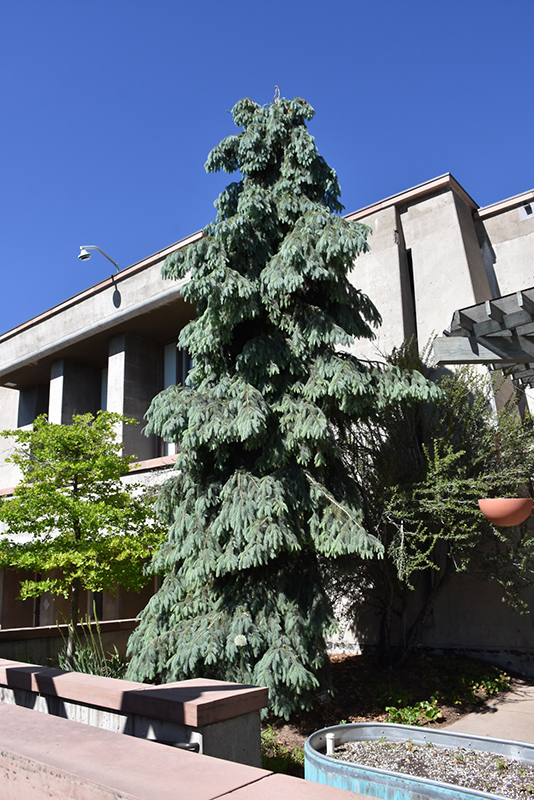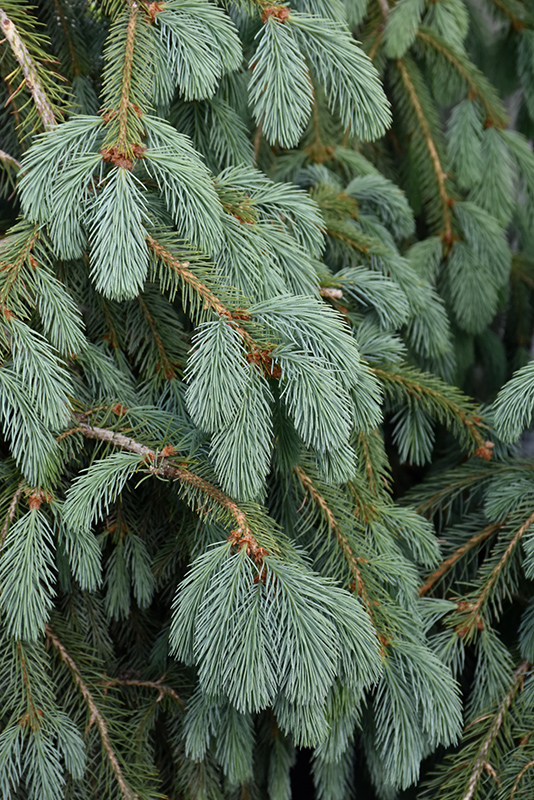Digging deeperPlant Library
Bush's Lace Engelmann Spruce
Picea engelmannii 'Bush's Lace'
Height: 25 feet
Spread: 6 feet
Sunlight:
![]()
Hardiness Zone: 3
Other Names: Weeping Spruce
Description:
An impressive selection with pendulous branches reaching down from a strong central leader; powder blue foliage; a great tree for adding vertical interest to the landscape skyline
Ornamental Features
Bush's Lace Engelmann Spruce is primarily valued in the landscape for its highly ornamental weeping form. It has powder blue evergreen foliage. The needles remain powder blue throughout the winter. The rough gray bark adds an interesting dimension to the landscape.
Landscape Attributes
Bush's Lace Engelmann Spruce is a dense multi-stemmed evergreen tree with a rounded form and gracefully weeping branches. Its relatively fine texture sets it apart from other landscape plants with less refined foliage.
This is a relatively low maintenance tree. When pruning is necessary, it is recommended to only trim back the new growth of the current season, other than to remove any dieback. It has no significant negative characteristics.
Bush's Lace Engelmann Spruce is recommended for the following landscape applications;
- Accent
- Vertical Accent
Planting & Growing
Bush's Lace Engelmann Spruce will grow to be about 25 feet tall at maturity, with a spread of 6 feet. It has a low canopy, and is suitable for planting under power lines. It grows at a fast rate, and under ideal conditions can be expected to live for 70 years or more.
This tree should only be grown in full sunlight. It is very adaptable to both dry and moist growing conditions, but will not tolerate any standing water. It is not particular as to soil type or pH. It is somewhat tolerant of urban pollution, and will benefit from being planted in a relatively sheltered location. Consider applying a thick mulch around the root zone in winter to protect it in exposed locations or colder microclimates. This is a selected variety of a species not originally from North America.
A NetPS Plant Finder tool
This Plant Library is for informational purposes only. We may or may not carry the items listed. During many times of the year, we may carry many more plants in our store than are listed in the Plant Library. Please contact us directly at 303-690-4722 or visit our store for current availability and for assistance.

